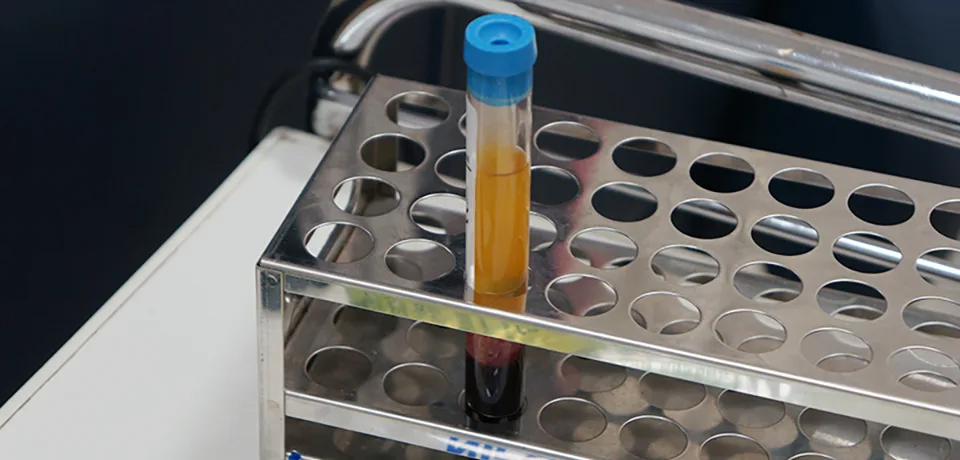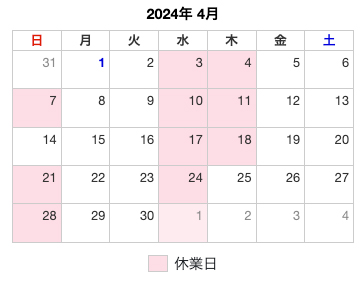Stroke sequelae treatment 2


This therapeutic material is made by extracting platelets from the patient's own blood.
It is a recovery medicine that aims to cure by using the tissue repair ability of the growth factor of platelets contained in blood to enhance the intrinsic healing power. It is a treatment with very few side effects because it uses its own blood.

About stroke sequelae
Treatment of sequelae of stroke such as cerebral infarction and cerebral hemorrhage
In this hospital, we are treating the sequelae of stroke, dementia treatment, and intractable diseases such as cerebral infarction and cerebral hemorrhage as cytokine therapy.
Even now, when medical science has advanced, sequelae after cerebral hemorrhage and cerebral infarction are generally in the situation where there is no effective treatment and the recovery depends only on rehabilitation such as physical therapy.
Currently, there are no drugs or treatments that are effective in treating dementia, and only suppress the progression of symptoms caused by various drugs.
Cerebral nerve cells are considered unrecoverable after 6 months of onset, and treatment of sequelae after cerebral infarction in the chronic phase is performed at any medical institution only for the purpose of maintaining residual function by physical therapy such as rehabilitation and improving There is no aggressive treatment aimed at.
In recent years, it has been found that the progress of medicine also restores brain nerve cells.
This is a treatment that uses your own cells and recovery abilities to restore or rebuild destroyed tissues.It is expected that recovery from medical conditions, which was previously thought to be impossible, will be improved. (Effects vary by individual)
From deciduous pulp
Cytokine cocktail
(Stem cell culture supernatant)
What is therapy?
Reduction of sequelae after cerebral infarction (cerebral hemorrhage)
Cytokine cocktail therapy is a recovery medicine that uses a culture supernatant derived from milk dental pulp Stem Cell. It provides treatment using cytokine cocktails, which has been reported to reduce sequelae after cerebral infarction (cerebral hemorrhage).
Sapporo Medical University reports cases in which patients who had difficulty walking due to paralysis associated with spinal cord injury improved their symptoms by administering self-cells, and became able to walk independently in a few weeks. .
However, when performing Stem Cell transplantation treatment, the number of stem cells in adults is small, so it is necessary to increase the number of cells by culturing to achieve a certain effect. However, it has been reported that a change in the gene level during the culture process may cause the cells to become tumorous (cancerous), which has been pointed out.
Subsequent studies have shown that stem cell transplantation treatment results in only a very small portion of the administered Stem Cell itself contributing to repair of the injury, and most of the cytokines (growth factors) released from the administered Stem Cell. ) Was received by its own cells, repairing the damage.
Nagoya University has reported that using cytokines that are responsible for the command system of each tissue actually released from Stem Cell has the same effect as Stem Cell transplantation treatment. In addition, Nagoya University has reported that cytokines released from dental pulp-derived stem cells also have an effect on brain neurons, and that motor paralysis of sequelae after cerebral infarction has been alleviated.
* At present, unfortunately, no reports have been reported on the effects of cerebral dysfunction following cerebral infarction, and only motor paralysis (dyskinesia) has been reported.
Protocols, such as dosage, duration, and target, have not been established and are not well-established treatments.
It has been found that the culture medium used to culture Stem Cells usually contains cytokines several hundred times that of adults. There is a report that it does not cause inflammation and has high efficacy compared to the conventional supernatant derived from fat stem cells.
The culture solution containing a large amount of this cytokine is called a cytokine cocktail (Stem Cell culture supernatant).
Cytokines don't have to worry about becoming tumorous (cancerous).In addition, dental pulp-derived cytokine cocktail therapy is attracting attention as a recovery treatment that can be expected to have the same level of therapeutic effect as stem cell transplantation therapy.
Indication symptoms
- Skin aging
- paralysis
- Motor dysfunction
- Impaired vision
- Dysphagia
- Aphasia disorder
- dementia
- Motor dysfunction in the chronic phase after cerebral infarction
- Peripheral nerve palsy
Indication disease
- Glaucoma
- Optic nerve atrophy
- Auditory neuropathy
- Brain dysfunction due to traffic injury
- allergic rhinitis
- Diabetic neurosis
- Alzheimer's dementia
- Amyotrophic lateral sclerosis (ALS)
- Parkinson's disease
- Various neurodegenerative diseases
Primary pulp Stem Cell and
Features of cytokine cocktail
Directly into the brain through the nose
The supernatant is absorbed and works.
Cytokine cocktail therapy is a recovery treatment that activates stem cells in the brain by administering growth factors (cytokines) to promote self-repair.
Intranasal administration involves a route from the olfactory bulb through the interstitium to the brain intervening area, a route from the trigeminal nerve to the brainstem and spinal cord, and capillaries in the mucosa. Reach inside

Nasal administration
(1) Pathway from the olfactory bulb through the cell stroma to the brain intervening part
(2) Pathway from the trigeminal nerve to the brain stem and spinal cord
(XNUMX) Due to the capillaries in the mucous membrane, cytokines in a shorter period and at a higher concentration than in the oral administration and infusion reach the brain.
| Treatment time | A few seconds (10 to 15 minutes on your back) |
|---|---|
| Number of treatments | 1-10 times 1 cool every 2 weeks for basic treatment. |
| Side effects | None |
| Pain after treatment | Report does not. |
| Treatment effect manifestation | Even if you can feel it from the next day though there are individual differences |
Treatment
1 weekly intervals, then
Nose and nose every 2 weeks
Perform an infusion.
The nasal and infusion of the deciduous pulp-derived cytokine cocktail (Stem Cell culture supernatant) using cytokines (proteins) released from the Stem Cell.
This treatment, which uses cytokines responsible for the command line of each tissue, is expected to be as effective as Stem Cell transplantation treatment. The method of administration alone is nasal, which is the fastest drug to the brain. Intravenous drip is used as a combination therapy.


Prices
Subject to medical expenses deduction.
| Only the first medical examination fee | 10,000 Yen(11,000 yen) No re-examination fee is required |
|---|---|
| Primary pulp Stem Cell supernatant Nasal treatment | 100,000 Yen(110,000 yen) (Including the cost of high concentration hydrogen inhalation therapy) |
| Primary pulp Stem Cell supernatant Nasal treatment 6 times | 540,000 Yen(594,000 yen) (Including the cost of high concentration hydrogen inhalation therapy) |
| Primary pulp Stem Cell supernatant Nasal treatment 10 times | 800,000 Yen(880,000 yen) (Including the cost of high concentration hydrogen inhalation therapy) |
| Primary pulp Stem Cell supernatant IV treatment | 120,000 Yen(132,000 yen) (It is a component of cocktail infusion with deciduous pulp Stem Cell supernatant added.) |
* Includes the cost of high-concentration hydrogen inhalation therapy.
* Treatment is free medical care (not covered by insurance).
FAQ
Reasons for using milk pulp instead of adipocytes, umbilical cordThe main cells used in treatment include those collected from dental pulp, bone marrow, cord blood, placenta, fat, etc., and the supernatant of stem cells derived from adipocytes has been widely used so far. .
In our hospital, we used the supernatant from fat Stem Cell mainly for treatment.
For hair growth and hair growth treatments such as HARG therapy, supernatants and cytokines derived from fat cells have been used. In fats, most fat cells are used after liposuction, and the risk of infectious disease, like other biologics, is not ruled out and may cause an inflammatory response.
On the other hand, in the dental pulp stem cell, the donor and collection route are established, and it is superior to other tissue stem cells in terms of efficacy, anti-inflammatory effect, etc.
ACR therapy is a plasma containing high concentrations of platelets obtained by centrifuging the collected blood, not a cytokine injection. Therefore, unlike Stem Cell treatment, it contains almost no growth factors or cytokines, and its cell activation effect is limited to some diseases such as sports.
Our hospital also provides combination therapy and has obtained therapeutic effects in the sports and beauty fields.
A medical institution that can receive a combination therapy of ACR therapy and Stem Cell supernatant solution is performing treatment for sports injuries of athletes.
ACR therapy requires blood collection and requires time and effort to treat.
What is the difference between “Stem Cell transplant” and “Stem Cell culture supernatant”?Stem Cell transplantation can cause inflammation and allergic reactions due to the proteins and other substances contained in the stem cell itself when it enters the body, and there is also the risk of side effects such as fever and malaise.
On the other hand, treatment with Stem Cell culture supernatant contains a large amount of growth factors and cytokines, and the effect is high, and the same effect as Stem Cell transplantation can be expected.
It is the difference between using a Stem Cell or using a cytokine, the therapeutic essence released from that cell.
It is a treatment that can be done quickly and easily without burdening the body. Any dosing method is possible.
It is a next-generation treatment that solves the risks, complexity, and high cost of new treatments.
| Stem Cell treatment | |
|---|---|
| 1: There is a risk of tumor | |
| 2: Takes a long time | |
| 3: Uncertain therapeutic effect due to culture method | |
| 4: Expensive treatment costs | |
| XNUMX: Risk of pulmonary embolism | |
| 6: In principle, no nasal treatment is performed |
| Stem Cell culture supernatant | |
|---|---|
| XNUMX: Almost no tumor formation | |
| 2: Treatment is completed in a short time | |
| XNUMX: Stable formulation and effect | |
| XNUMX: Lower treatment costs compared to Stem Cell treatment | |
| XNUMX: High reliability | |
| 6: Can be treated with nasal nose, direct approach to the brain |




